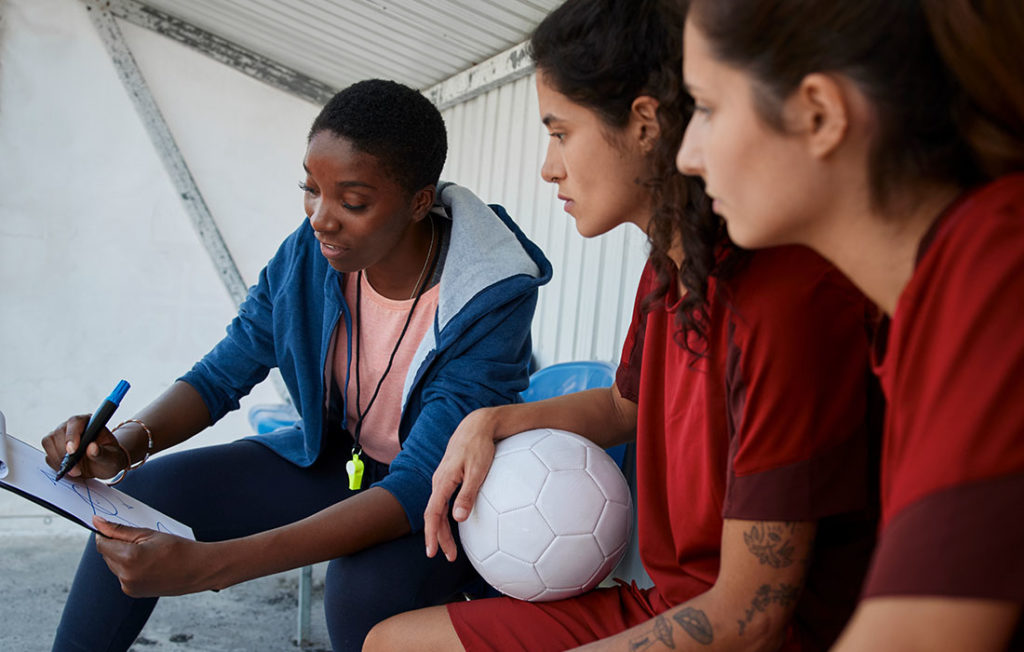To Build Team Trust, Tune in to Your Athletes’ Moods

New ideas for creating positive sport environments can emerge from any corner. Powerful voices can help these ideas take root in any sport setting.
That’s the premise of Supporting Whole Athletes, a new U.S. Center for SafeSport podcast to help coaches strengthen the culture of their team and the personal development of the athletes they coach. The thought-provoking podcast features Kelly Kratz, coach, parent of four, and lead trainer for the Positive Coaching Alliance—and honors the influence of coaches in the weeks leading up to National Coaches Day on October 6.
“They say, ‘Sports is a great way to build character. Well, I think it’s a great way to reveal character,” Kratz says. “If you don’t have a positive coach and person in that space who’s going to help these children learn character, it’s not automatically going to happen.”
One way coaches help develop a positive dynamic with athletes, Kratz says, is by taking time before practice to check in as a team and see how everyone’s doing.
“Just taking a couple minutes to say, ‘Everybody go around, and share your “happy/crappy” for the day’… it helps players know that I want to know how your day is going,” Kratz says.
“Because if I’m going to expect you to give me 100% at practice today, and you only have 60% to give… I want to make sure that your emotional tank is full, so you can give your best.”
Kelly Kratz
Tactics like this help create a team culture in which athletes feel comfortable coming to you if there’s an issue. This openness is a two-way street. Kratz finds that being vulnerable and sharing challenges from her own life can model for athletes that “it’s OK to not be OK,” and can build trust.
When coaches notice young athletes who may not be at their best on a particular day, Kratz uses tactics from her counseling background to try to get beyond the surface “I’m fine” response kids often give adults when asked how they’re doing.
“I’ll say, ‘Well, tell me about your day. Tell me about what’s going on.’ And if you start with that, then you actually can engage them in dialogue. Body language is huge,” Kratz says. “If you are concerned, check in with their parents. I think there’s no reason that a coach should shy away from asking too many questions. Because safety is Number One.”
Get the full story by listening to the podcast below.
